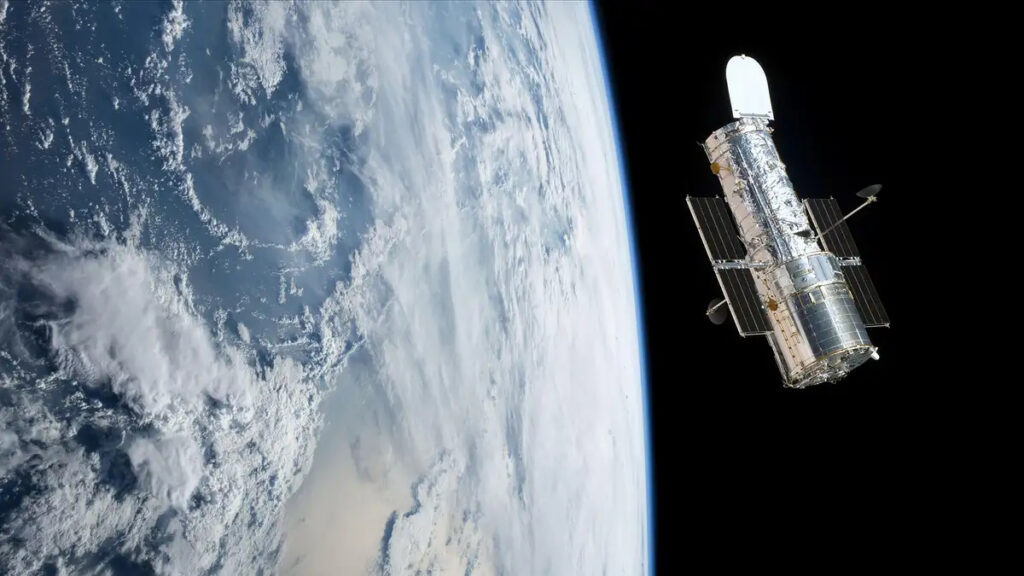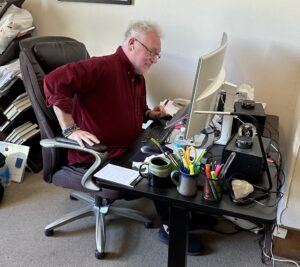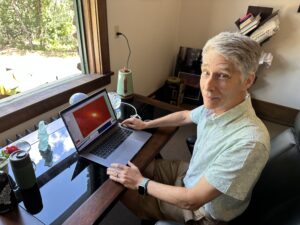
An artist's rendition of the Hubble Space Telescope in orbit. Photo credit: NASA
We Got Time on the Hubble Space Telescope – Now What?
For astronomers to “get time on” the Hubble Space Telescope, they first need to write a proposal and then hope that it gets approved. But there is a big step between this approval and actually getting data.
While the James Webb Space Telescope is garnering headlines with its unprecedented views of the cosmos, the good ol’ Hubble Space Telescope keeps chugging along, supplying astronomers such as Lowell Observatory’s Dr. Michael West with data that are critical to their research.
Receiving that data is the last step of an often-arduous process that requires a good dose of patience and perseverance. First, a scientist, or group of scientists, must write a proposal outlining the kind of data they want to collect, why it is important, and how they will use it. That sounds like a fair amount of work but certainly doable. But there is a catch: only about 15% of the thousand or so proposals submitted each year are approved by a review team. That means that far more often than not, scientists end up spending a significant amount of time working on a proposal, only to see it turned down.

Scientists whose proposals make it through this gauntlet may celebrate their success, but they soon must start on Phase 2 of the proposed work. This involves creating detailed instructions for the Hubble to collect the data. Since time with the telescope is allocated to specific dates and times, there is a hard deadline by which the scientists must complete the instructions.
It is this instruction-writing phase that, among other research work, brought Dr. Michael Gregg—an astronomer at the University of California, Davis—to Lowell Observatory over the past few weeks. He is one of West’s collaborators on multiple research projects and the two met to hammer out the instructions for an approved Hubble proposal. It involves examining individual stars that have been released from galaxies within the Virgo Cluster of galaxies that were destroyed. West and Gregg are particularly interested in looking at variable stars, whose brightness appears to vary with time. Their properties are useful for determining distances in space and will also provide information about the ages and chemical compositions of these orphaned stars as well as their parent galaxies. This work is related to another project West and Gregg are working on, examining globular star clusters in the heart of the galaxy cluster known as Abell 1185. This galaxy cluster is unusual because its gravitational center shows a peak of x-ray activity but there are no big galaxies there. Instead, there is an excess of globular clusters that are probably the remains of galaxies that once existed there.

For the instruction-writing work, West and Gregg spent most of their time in West’s office, beating out the details and entering them into the so-called Astronomer’s Proposal Tool. This utilizes a sophisticated GUI (for Graphical User Interface, pronounced gooey) that allows them to enter the data and then see a picture that depicts how Hubble will be pointed based on their instructions. This work can be tedious and time consuming, but also enjoyable and an opportunity for colleagues to spend time together.
After the regular workday ended, West and Gregg—who are former classmates at Yale University—then retired to West’s home and continued their discussions during dinner. They ended the evening with even more conversations about their work. For many mornings after they repeated this process, setting themselves up for the final stage of their proposal—collecting data. And even then, it could take up to two years for Hubble to complete their observations and send the data to Earth. But all this effort is worth it and a critical part of being an astronomer.